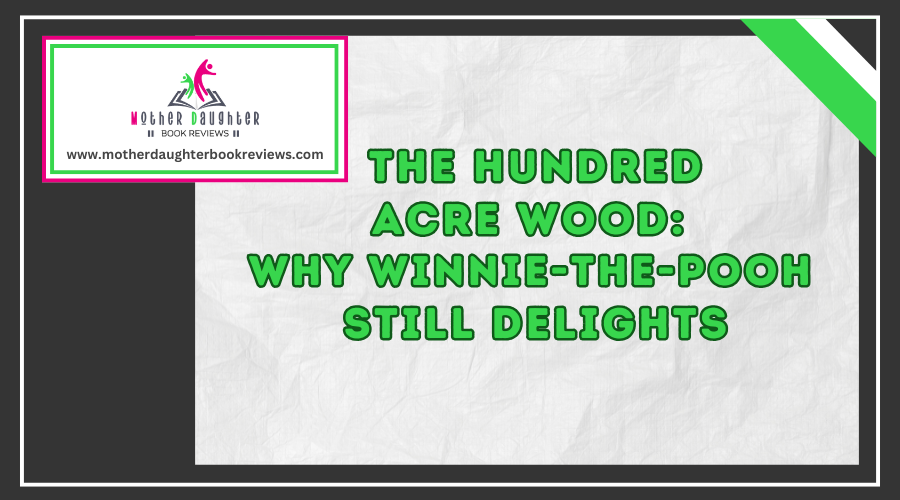The Hundred Acre Wood: Why Winnie-the-Pooh Still Delights

Step into the enchanting world of the Hundred Acre Wood with Winnie-the-Pooh and his beloved friends. You'll meet the honey-loving Pooh, brave little Piglet, exuberant Tigger, and the ever-gloomy yet endearing Eeyore. Experience joyous adventures like the playful Poohsticks game and learn heartfelt lessons from thoughtful Christopher Robin. The whispering trees, crystal-clear streams, and cozy hideaways invite you on a nostalgic expedition filled with friendship, kindness, and simple pleasures.
The Creation of Winnie-the-Pooh
A.A. Milne's inspiration for Winnie-the-Pooh came from his son, Christopher Robin, and his collection of stuffed animals. As you explore the creation of this beloved character, you'll uncover how Milne's observations of his son's imaginative play shaped the fanciful world of the Hundred Acre Wood. He didn't just invent characters out of thin air; he drew from real-life experiences and relationships, particularly the bond between Christopher Robin and his toys.
Character development played an essential role in bringing Winnie-the-Pooh to life. Milne painstakingly crafted each character with distinct personalities and traits that mirrored the quirks of real people and animals. Pooh, for instance, is endearing and somewhat slow-witted, but his simplicity and kindness make him universally relatable.
View this post on Instagram
In the heart of the Hundred Acre Wood, every step you take is filled with a sense of enchantment that captures your imagination. The lush, sprawling forest is a canvas of nature's wonder, where every tree and stream beckons you to investigate. As you wander through this magical landscape, you can't help but feel a rush of childhood nostalgia, recalling the tales of Winnie-the-Pooh and his friends. Here are three enchanting elements of the Hundred Acre Wood that will draw you in: Every corner of the Hundred Acre Wood is a reflection of nature's wonder, urging you to reconnect with the simple joys of your youth. Amidst the enchanting wonders of the Hundred Acre Wood, one can't help but notice how the themes of friendship and loyalty are woven into the very fabric of this magical place. As you navigate through the stories, you'll see how Winnie-the-Pooh and his friends demonstrate the essence of true companionship. The friendship dynamics between characters like Pooh, Piglet, and Tigger highlight the importance of being there for one another, no matter the circumstances. For instance, Pooh's unwavering support for Piglet during moments of fear and uncertainty teaches valuable loyalty lessons. You'll find that even when faced with challenges, these characters stick together, showing that loyalty isn't just about grand gestures, but also about everyday acts of kindness and support. Tigger's boundless energy and enthusiasm remind you that friends can lift each other's spirits, even during gloomy times. When you engulf yourself in the tales of the Hundred Acre Wood, E.H. Shepard's illustrations breathe life into A.A. Milne's beloved characters. Shepard's style is instantly recognizable, blending delicate line work with a timeless charm that perfectly captures the essence of Pooh and his friends. Shepard's artistic influences include the classic illustrators of his time, lending his work a nostalgic imagery that strikes a chord across generations. His illustration techniques, such as the use of cross-hatching and subtle shading, create depth and texture, making the Hundred Acre Wood a vivid, almost tangible place. Shepard's visual storytelling shines through in his ability to convey character expressions with just a few strokes of his pen. Regardless of whether it's Pooh's gentle curiosity or Eeyore's perpetual gloom, these iconic visuals are etched in our memories. To fully appreciate Shepard's contribution, consider the following: Shepard's illustrations are a masterclass in visual storytelling, ensuring that the magic of the Hundred Acre Wood endures. Winnie-the-Pooh isn't just a character in a book; he's become a cultural icon. You see this lovable bear not only in the pages of A.A. Milne's classic stories but also in diverse aspects of everyday life. Pooh's presence extends far beyond literature, permeating movies, television, and even theme parks. His recognizable image and endearing personality have made a significant merchandising impact, resulting in a multitude of products ranging from plush toys to clothing and home decor. You can't walk into a toy store without spotting Pooh's familiar face. This widespread merchandising has cemented his place in popular culture, making him instantly recognizable to people of all generations. Furthermore, cultural references to Winnie-the-Pooh pop up in unexpected places. Pooh Bear's charm lies in his simplicity and relatable nature, making him a beloved character across generations. You can't help but be drawn to his nostalgic charm and the childhood innocence he represents. Pooh's world is uncomplicated, filled with honey pots, loyal friends, and gentle adventures that never fail to warm your heart. Why does Winnie-the-Pooh continue to capture our imaginations? Here are three key reasons: Engaging with Winnie-the-Pooh isn't just about reliving your childhood; it's about connecting with timeless values that still matter today. In Winnie-the-Pooh, the charm of the Hundred Acre Wood continues to enchant readers young and old, offering a gentle escape into a world of simplicity, friendship, and warmth. A.A. Milne's heartfelt storytelling and E.H. Shepard's iconic illustrations create an enduring legacy, reminding us of the beauty in small joys, loyalty, and the wonder of childhood. From Pooh's love of honey to the wisdom of Christopher Robin, these tales touch on universal themes that resonate across generations, making Winnie-the-Pooh more than just a beloved story.Meet the Beloved Characters
Iconic Adventures and Tales
The Wisdom of Christopher Robin
The Enchantment of the Hundred Acre Wood
Themes of Friendship and Loyalty
The Illustrations of E.H. Shepard
Winnie-the-Pooh in Popular Culture
The Timeless Appeal of Winnie-the-Pooh
Wrapping Up
